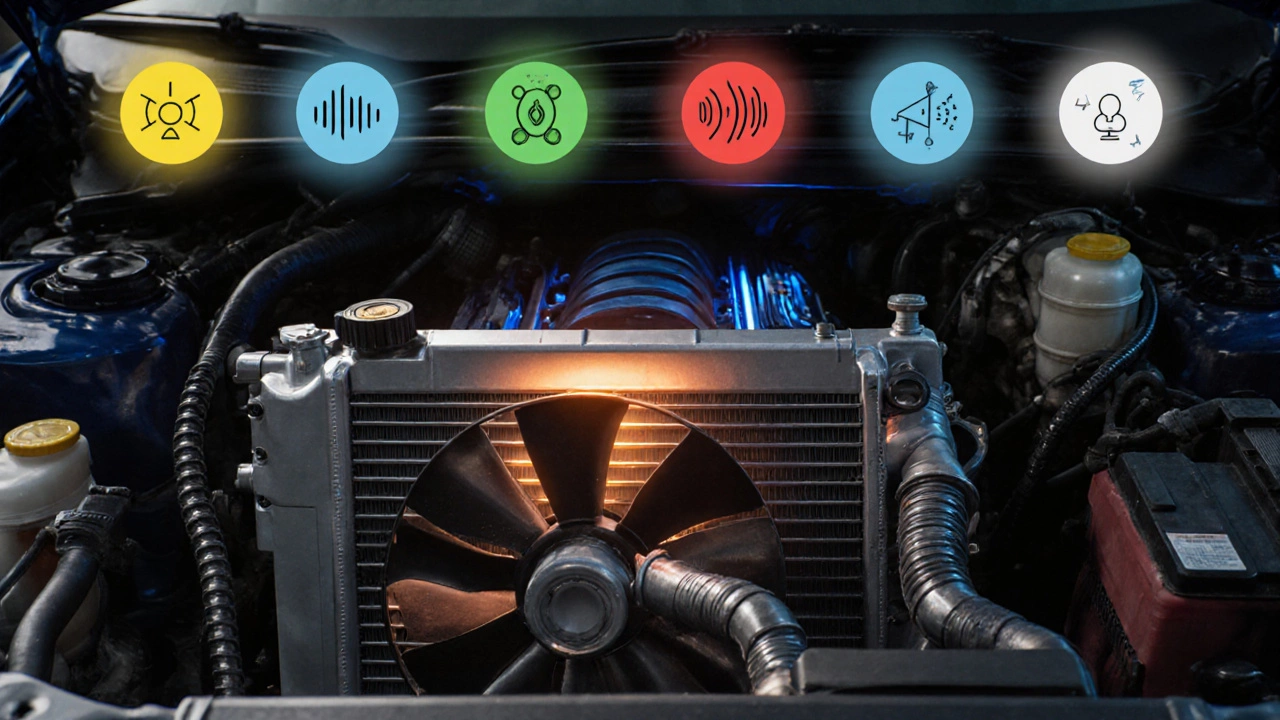Radiator Knocking: Causes, Symptoms & Fixes
Radiator Knocking, a distinct knocking or pinging sound that comes from the engine's cooling circuit, usually heard when the engine is warm or under load. Also known as coolant knocking, it signals that something in the heat‑removal pathway isn’t working right. The noise often travels through the Radiator, the core component that transfers heat from the coolant to the air, but the root cause can lie elsewhere in the system.
Common Triggers of Radiator Knocking
When you hear radiator knocking, start by inspecting the Coolant System, the network of hoses, passages, and components that circulate liquid to keep the engine at optimal temperature. Air bubbles trapped in the fluid act like tiny pistons, striking the radiator walls and creating the knock. A low coolant level, a cracked hose, or a stuck pressure cap can let air in. If the coolant looks milky or foamy, you’re likely dealing with air‑induced cavitation, which not only sounds bad but can erode metal over time.
The next suspect is the Water Pump, the mechanical heart that forces coolant through the engine and radiator. A worn impeller or a loose bearing can generate pulsating flow, producing a knock that mirrors the pump’s rhythm. Likewise, a malfunctioning Thermostat, the valve that regulates coolant temperature by opening and closing based on heat can cause rapid pressure changes. If the thermostat sticks closed, pressure builds quickly, forcing coolant to hammer against seals. If it sticks open, the engine runs cold, and the pump may cavitate, both scenarios leading to the characteristic noise.
Beyond the main trio, the radiator fan, head gasket, and even the coolant temperature sensor can contribute. A fan that cycles on and off erratically creates sudden pressure dips, while a blown head gasket lets combustion gases enter the cooling circuit, increasing pressure spikes. The pressure cap itself is a safety valve; a weak spring can fail to release excess pressure, forcing the coolant to expand and knock against the radiator housing. Checking each component with a pressure tester or listening with a mechanic’s stethoscope helps isolate the exact source.
Understanding how these pieces interact gives you a roadmap for diagnosing radiator knocking. In the articles below you’ll find step‑by‑step guides on inspecting coolant levels, testing the water pump, swapping thermostats, and spotting hidden head‑gasket leaks. Whether you’re a DIY enthusiast or planning a garage visit, the collection equips you with the know‑how to silence that knock and keep your engine’s cooling system running smooth.

Common Bad Radiator Sounds & How to Identify Them
Oct 22 2025 / RadiatorsLearn the typical sounds of a failing car radiator, what each noise means, how to diagnose the problem, and when to call a mechanic.
VIEW MORE